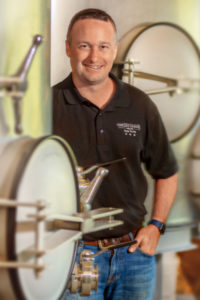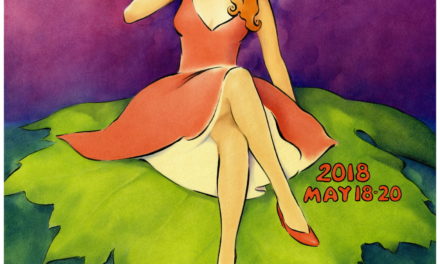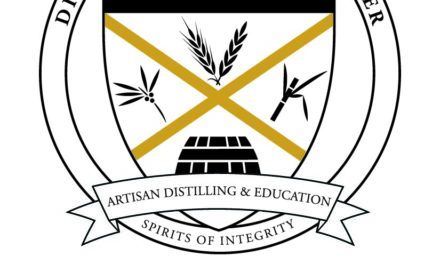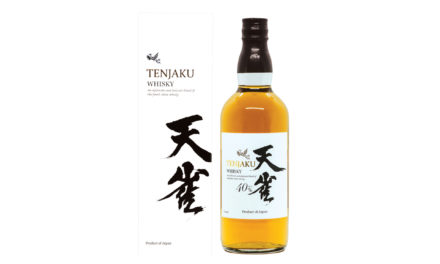A few years ago, Jason Williams, general manager of Venge Vineyards, was worried about one of his wines. Scout’s Honor, a blend introduced in 1995, is Venge’s gateway wine, the only product the Napa vintner distributes through retail outlets. It introduces consumers to the brand, drawing them to Venge’s higher-priced, premium wines.
But for several years, sales of Scout’s Honor had been sinking. “Something with the brand was dragging, lagging. We were down 11 percent year over year,” Williams says. He decided to tweak a few things. “Now we’re up 43 percent.”
So what did Williams change? Not the wine. “The quality has been the same, the fruit has been the same, the vineyards are the same. The only thing that’s changed is the package.” Williams moved from a paper label to screen-printed bottles, featuring the winery’s distinctive logo in metallic ink. Williams works with Bergin Glass for Venge’s bottles, which all now feature alluring metallic effects. A little bling makes a big impression.

Bergin Glass Owner Mike Bergin
Accents and Flourishes
Located in Napa, Calif., Bergin Glass has offered artisanal screen printing and etching to the wine industry for 32 years. Owner Mike Bergin employs 15 full-time etching and painting artists and 45 screen print staff, all supported by account managers, production art staff, and department managers. All the information included on a label, from TTB-required data to vineyard designation to vintage, along with visual imagery, can be screen-printed on a bottle. The Bergin team can mix inks to produce virtually any color. For a metallic look and feel, mica is blended into the ink, giving it a glittery, shiny look and slightly sandy texture.
But for extra glitz, Bergin says, customers can also opt for precious metals: platinum, copper, even 22 karat gold. Bergin counsels clients to use the precious metal effect sparingly for the biggest impact due to the increased cost over regular paints and metallic inks. Used judiciously, precious metals can take a label to a new level for a few cents.
Dan Panella, co-owner of Oak Farm Vineyards in Lodi, Calif., worked with Bergin artists to incorporate small doses of copper into his bottle designs. “If you do a whole label [with metallic ink] it’s way over the top, pricewise,” he says. “Also, just from a visual standpoint, when it’s too shiny it’s not as interesting. It becomes too much; it’s too loud.” Copper illuminates the Oak Farm medallion, along with leaves and acorns scattered throughout the tree in the label art.
The cost, Panella says, isn’t an issue. “There are some logistics involved. You have to send the bottles [to Bergin] ahead of time for printing, then they’re shipped back to the winery for bottling. But cost per label, depending on what you do with the screen printing, can be pretty close to what an elaborate paper label would cost.”
From Fashion to Alcohol
Apholos Brand Identity, an Argentinian company, has been working with metals for 100 years, beginning with the fashion industry (think buttons, zipper pulls, or the rivets holding a pair of jeans together). Today they also create solid metal labels and metal closures for wines and spirits. “Twenty years ago, we realized we had the knowledge and the technology to add value to other industries with metal applications,” says Diego Gneri, North American regional manager for Apholos. “As our name says, we are creating brand identity.”

Scott Hanson displays his company’s first whiskey [Photo courtesy Hanson of Sonoma Distillery]
The Hansons worked with Rui Bastos Amaro, owner of Bastos, LLC, a Napa, Calif.-area supplier of Apholos labels, to create a distinctive, sculpted label covering most of the front of their whiskey bottle. Spirits are a growing market for metal labels, Bastos Amaro says, and the Hansons are typical of his clients who “just want to create a brand that pops out of the box.”
Despite Apholos’s history working with metals, Gneri says, there was a learning curve when moving from fashion into bottles. As the Hansons discovered, adhering a metal label to a curved bottle presented some challenges. Apholos makes labels mainly from Zamak, an alloy of zinc, aluminum, magnesium, and copper. They can be electroplated with more than 100 different metal finishes, including copper, silver, and gold. The casted metal can be three-dimensional, with depth and structure.
For small runs, most labels will be hand applied. To help with accuracy, Apholos offers forms that help a worker align the label consistently on every bottle. For bigger runs, Apholos has developed an automatic machine to help making the process faster. Last year, Gneri says, the company developed an attachment for mechanical bottling lines, costing between $15,000 and $17,000, that can apply metal labels during a regular bottling run.
A High-end Presentation
Winemakers and label producers agree that the labels themselves don’t dramatically increase the final cost of a bottle of wine. Depending on the quantity, size, and metal finish, Gneri says, labels can fall anywhere between 25 cents and $3. Still, most clients reserve metal labels for their premium, high-end bottles. John Bookwalter moved to metal labels for his top-tier J. Bookwalter Wines about seven years ago. Each label costs as much as $2, he estimates, but that isn’t a factor he worries about for bottles selling for upwards of $100. “It’s emblematic of the effort we put into the wines,” says the Washington winemaker. “It’s equal to or greater than what we put into the bottle.”
Not all metal labels are the same. Erica Harrop launched her Napa, Calif.-based company, Global Package LLC, in 2006, marketing unique and high-quality bottles to the wine industry. When the recession hit in 2008, she wanted to add another packaging option that evoked quality without the cost of a heavy bottle. Metal labels fit the bill. Harrop imports pewter labels from a French company called Etiq’Etains. “It’s a way of offering another option to a winery,” she says, “if they want to do something special but only have 300 cases.”
Like Zamak, pewter can be colored by electroplating or painting with inks. Etiq’Etains also offers foil highlights from a process of applying thin layers of foil on top of the pewter to stamp with the label design. Finally, the manufacturer applies a hand-rubbed patina that gives it an aged look.
“It looks very handcrafted,” Harrop says, “and that’s a subliminal message that says ‘This is very personal to me, we put a lot of attention into this brand.’” She describes her typical client as “somebody who feels they have a unique product and they’re trying to find a way to put that brand in a higher place. You can do that with strange-shaped bottles and odd different things, but that’s not what the industry is drawn to. The industry is drawn to very traditional things that emote a high quality. Normally, those are going to be wineries selling a product above $50.”

Matt Moye, co-owner and winemaker, Vincent Arroyo Winery
One “typical” client is Vincent Arroyo Vineyards. While traveling in France, Arroyo had seen pewter labels on containers of gourmet olive oil. He loved the look so much he spent the next 10 years searching for them. When he stopped by her office to introduce himself, she recalls, he caught site of the pewter label and became one of her first customers.
Today, Arroyo Port Wines are labeled in pewter, but the rest of the inventory retains a paper label—even the winery’s olive oil. Matt Moye, co-owner and winemaker, says cost is part of that decision. The pewter costs nearly three times as much as the winery’s paper labels. But that added expense on Arroyo’s dessert wines, happily, is offset with free labor: a group of wine club members from Texas trek to Petaluma every year to apply them by hand.


























